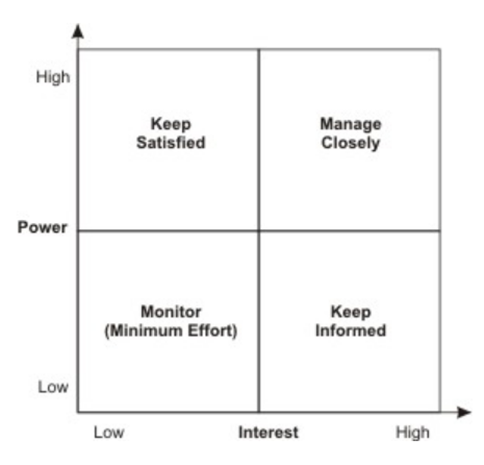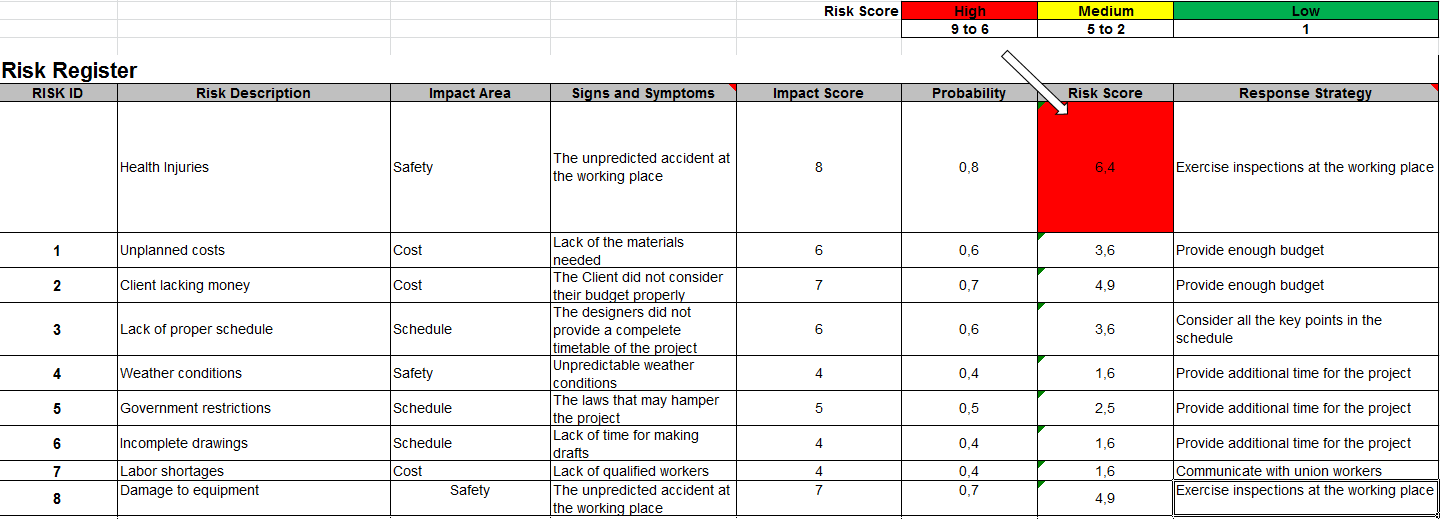Issues and Constraints
Effective construction communication needs the engagement of all the stakeholders to design a plan for building a piece of property. As a project manager, I will communicate with the necessary stakeholders and develop a construction project for the client who purchased the property five years ago. I will also consider all the requirements for the building and constraints to the stakeholders.
As the client purchased the property five years ago, it is necessary to develop the project as soon as possible. However, the building requires creating a plan, involving all the stakeholders, employing architects, and considering the budget. Thus, exercising the construction may take approximately 5-9 months. There can be other constraints to the projects, such as communication with residents and concluding contacts with material suppliers (Sapuay, 2016). Therefore, it is important to think over all the points and design an exact plan with the key points of implementation.
The second point to consider is the construction cost, which includes the cost of furniture and equipment. As a project manager, I should think about the salary for the employed workers, such as architects, engineers, inspectors, and consulters. Thus, the cost may also be a constraint that can augment the time needed for construction.
It is also essential to ensure the quality of the materials for the building, colours in the architecture, as well as safety of staying in the housing. It will be important for the project employees and subcontractors to accept the plan and deadline of the construction.
However, the project may face such issues as different technology among the contractors. Due to this, not all the suggested materials can be used. The managers should find the ones that are available at present in the city. In addition, weather conditions and a lack of appropriate documents may also delay the construction. Therefore, the construction strategy should include the delays and hampers, and possible variations in time.
Roles and Responsibilities of the Stakeholders
For the project to be successful, the stakeholders should exercise their functions effectively. Firstly, contractors are the people who manage the building process from the pre-design stage to the one of post-construction and approval. A contractor may have assistants, such as sub-contractors. They are responsible for directing the time, budget, and workers, and meeting the plan requirements.
Clients are the persons who own the property and are the initiators of the project. Their roles are to invent the design, the external look of the building. They also define the materials, terms, and budget of the project. In real estate construction, clients range from young families to owners of commercial housings. The client is the main point to start the project and to finish it.
The government is also an important stakeholder in construction management. The local government admits or forbids the project, considering the needs of the local population. Federal governments establish the codes and documents for safety, such as materials and fire protocols (Wu, 2016). The role of unions is to be a consultant for a contractor and ensure proper management of human resources, execution of policies and procedures requires for the building. In addition, unions may provide the project with qualified workers, such as traders, contractors, and sub-contractors, who can provide better and safer work.
Power and Interest of the Stakeholders
Stakeholders are responsible for managing the construction project, and thus, they have the power and interest in it appropriately. At the stage of monitoring and finding information and data for the building, the power of an architect is low, and the interest is low. However, the power and interest of a contractor and their sub-contractors will be high at this stage as they are responsible for monitoring and concluding contracts with governmental and commercial organizations and the Client. In addition, the government will also have high power as they direct all the development of the construction. The Client will have high power and interest in the project during all the stages, as they are the customer and the motive force for the start and execution of the building.
A contractor and a sub-contractor will have high power and responsibility in keeping the management informed about the execution of the project and its issues, risks, and constraint. In keeping the Client satisfied, an architect and a designer will have high power. A designer produces a plan for the building, creating the internal and external look. They also decide where and how the building will be constructed. It is especially important in a highly-populated area with a great amount of traffic on the roads. A designer decides where the windows will open on, and how to construct the building to avoid much noise from the outside. The division of powers in the construction project can be seen in Picture 1.

In the detailed management of the project, project managers and end users have the main power. They determine whether the building can be finished and whether it has been conducted in a proper way. The end user approves or disapproves the project and defines the design in details. Therefore, the stakeholders, including a contractor, an architect, sub-contractors, the Client, a designer, a project manager, and users, have a different amount of power and interest during the initial and late stages of the execution of the project.
Deliverables of the Project
A work breakdown structure (WBS) is an instrument in project management that considers all the steps in a plan, organizes the activities, and presents them graphically (Helicar, 2021). It provides the project manager with a detailed plan of the project deliverables and works that need to be done. As a project manager, I will consider the work components to deliver the house to the Client.

The first work to deliver the project will be design, which includes the permissions of the governmental organizations and local site owners, among others (Helicar, 2021). This stage also needs graphical drawings of the building to be created. The second deliverable will be procurement (Helicar, 2021), which is acquiring the materials and services for the construction. It also involves employing workers, such as electricians and plumbers. Thus, in this stage, the house is provided with an electricity and water supply system.
The third deliverable is the very construction of the building. Here, it is important to take into consideration both the exterior and interior of the building. The architects are responsible for executing the works on the external and internal appearance of the house as it is planned in the design drawings. The fourth deliverable is inspections, which include masonry work and building finishes. Masonry work utilizes separate objects to construct a house; they may include brick, stone, and mortar. It is one of the most popular methods in the world for a long time already. Building finishes include the ends acts that are needed for the completion of the project.
The last deliverable is the turnover, which is “the total sales made by a business in a certain period” (Helicar, 2021). It includes the revenues made for the period of the building and has two components. The first component is finishing the work step by step so that all the requirements are met. The second component is closing the project, its approval by the Client and the local government, and providing all the formal documents needed. Therefore, to deliver a house to the Client, the project manager should consider the design, procurement, construction, inspections, and turnover deliverable acts.
Risks of the Construction Project
In the construction of the house, it is essential to consider all the risks involved in the project life cycle. The main categories of risks in construction include safety, finance, and schedule. The building is a dangerous industry, and thus, the priority will be on providing safe working places for the employers. To do this, the directors exercise everyday inspections to ensure that all the procedures and protocols are followed.

The financial risks include the unplanned costs and the urgent need for materials not included in the project plan (Siraj and Fayek, 2019). In addition, there is a risk that the Client will not have enough money to pay for the project, and thus, the project cannot be completed in a set period. To mitigate this risk, the project manager should think over every point of the plan accurately and make the necessary estimates that will include unpredicted situations.
The schedule risk implies the lack of a proper timetable of the execution of the project and may result in great losses in the building budget (Siraj and Fayek, 2019). The schedule may be changed unpredictably due to every point in design or outside factors of the project. The changes may also lead to misunderstandings with the stakeholders and workers. Thus, to eliminate the risk, the manager should ensure that the budget is enough to cover the expenses and the schedule includes such shifts.
Project Brief
General Information
- Project Name:___________________________
- Client:__________________________________
- Prepared by: Date:_____________________________
- Authorized by:_________________________________
Project Objectives
As the client purchased the property five years ago, it is necessary to develop the project as soon as possible. However, the building requires creating a plan, involving all the stakeholders, employing architects, and considering the budget. Thus, exercising the construction may take approximately 5-9 months. There can be other constraints to the projects, such as communication with residents and concluding contacts with material suppliers. Therefore, it is important to think over all the points and design an exact plan with the key points of implementation.
The purpose of the project is to provide the construction project for the building together with the issues and their resolutions.
Project Deliverables
Project Information
Project Critical Success Factors
- The building requires creating a plan, involving all the stakeholders, employing architects, and considering the budget.
- As a project manager, I should think about the salary for the employed workers, such as architects, engineers, inspectors, and consulters.
- It is also essential to ensure the quality of the materials for the building, colours in the architecture, as well as safety of staying in the housing.
- It will be important for the project employees and subcontractors to accept the plan and deadline of the construction.
Project Assumptions
- Exercising the construction may take approximately 5-9 months. There can be other constraints to the projects, such as communication with residents and concluding contacts with material suppliers.
- The cost may also be a constraint that can augment the time needed for construction.
- Weather conditions and a lack of appropriate documents may also delay the construction.
Project Constraints
- There can be constraints to the projects such as communication with residents and concluding contacts with material suppliers.
- The cost may also be a constraint that can augment the time needed for construction.
- Weather conditions and a lack of appropriate documents may also delay the construction.
Reference List
Helicar, L., 2021. What is turnover in business and how do you work it out? Simply Business. Web.
Sapuay, S., 2016. Construction waste–potentials and constraints. Procedia Environmental Sciences, 35, pp. 714-722.
‘Stakeholder Management in the Construction Sector’, 2020. Web.
Siraj, N. and Fayek, A., 2019. Risk identification and common risks in construction: literature review and content analysis. Journal of Construction Engineering and Management, 145(9), p. 03119004.
‘What is a Work Breakdown Structure?’, 2020. Web.
Wu, C., Wang, F., Zou, P. and Fang, D., 2016. How safety leadership works among owners, contractors and subcontractors in construction projects. International Journal of Project Management, 34(5), pp. 789-805.